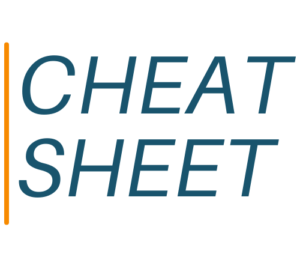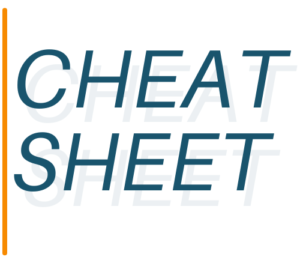
Cheat Sheet: AI Targets
This cheat sheet is a revision of the one published in August 2022. You’ll find new names among the 21 listed. Definitely new is the appearance of generative AI examples.

This cheat sheet is a revision of the one published in August 2022. You’ll find new names among the 21 listed. Definitely new is the appearance of generative AI examples.

As a subscriber request, we refreshed our Feb. 2022 cheat sheet and got pretty much all new names — 18 in all. AI and cybersecurity are trends within the quantum category.

Launched in 1843, The Economist has been around longer than public relations itself. For those who pitch stories, it remains as daunting as Kilimanjaro. Yet many executives insist on climbing it. What is PR to do? The publication doesn’t even offer bylines.

This one is a revamp from our 2021 effort. Three targets remain from that list — the other seven are new to us.

Here’s a cheat sheet with 10 targets who cover women’s health from a digital POV. We found it tough to pin this one down to a specific publishing segment… health trades to some degree.

This is an all-new cheat sheet (based on the date above) focused on women in tech. Fortune, Forbes and Fast Company continue to budget resources to the topic. Most publications cover the topic occasionally.

Most PR pros categorize targets by beat, then by publication. There’s another way — by experience. The rookies are happy to be where they are. And quite often they are friendly toward PR, especially when you appear to know a little bit about them.

We came up with 25 names of reporters and editors, from the deep trades to the top of Tier 1. Pretty much any CNBC show covers M&A when it breaks, so we omitted that property. We’re pretty sure everyone else is in there, with contact info.

You need to be logged in to view this content. Please Log In. Not a Member? Join Us

Where are the pitchable consumer tech podcasts? So many of them are produced by people who disregard pitches. So we used our best judgment building this cheat sheet — which ones might you have a ghost of a chance of influencing?
YOUR ACCOUNT
FRIDGE NOTES
This is majorly tl;dr, but recent research from FT Strategies and Reuters empirically uncovers every trend there is, when it comes to the health of the media business. In short, “the media” is barely breakeven, here and around the world. AI search may prove devastating.
The WSJ this week launched CEO Brief, a newsletter designed to inform readers, and to attract new members to the WSJ Leadership Institute. This organization is already a Dow Jones profit center, and a great example of how Tier 1 can lessen dependence on advertising. Former Fortune CEO Alan Murray runs the institute and is the nominal editor of CEO Brief — and promises to read every bit of reader mail — though he has delegated the writing of the newsletter to subordinates in the early going.
Fast Company’s Lydia Dishman has joined (SWMS subscriber) Method Communications as VP of content strategy. Lydia joins an already strong content team, which includes former NY Times reporter Tim Race and B2B tech edit vet John Foley.
“I’m leaving to build something new,” Alex posted on X today. He spent 12 years at Forbes as a reporter and a builder of databases and lists. It’s time he gets to keep the money.
Axios reported on Jan. 24 that private equity firm Blackstone will sell IDG/Foundry, publishers of InfoWorld, Computerworld and Network World (and owners of IDC) to another private equity firm called Regent, which bought streaming video channel Cheddar in 2023. Remains to be seen how the ownership change will affect IDG’s venerable IT titles, but it’s unlikely their budgets will go up.
Unionized writers have secured new protections governing the use of generative AI in member newsrooms, reports the Hollywood Reporter. The union — Writers Guild of America, East — represents Fast Company, Wired and many other prominent titles. The union won agreement that publications “will not lay off current staff employees due to the use of generative AI,” and also that “advance notice [must be given] if the company plans to make the use of generative AI systems a requirement of [editors’] jobs.”